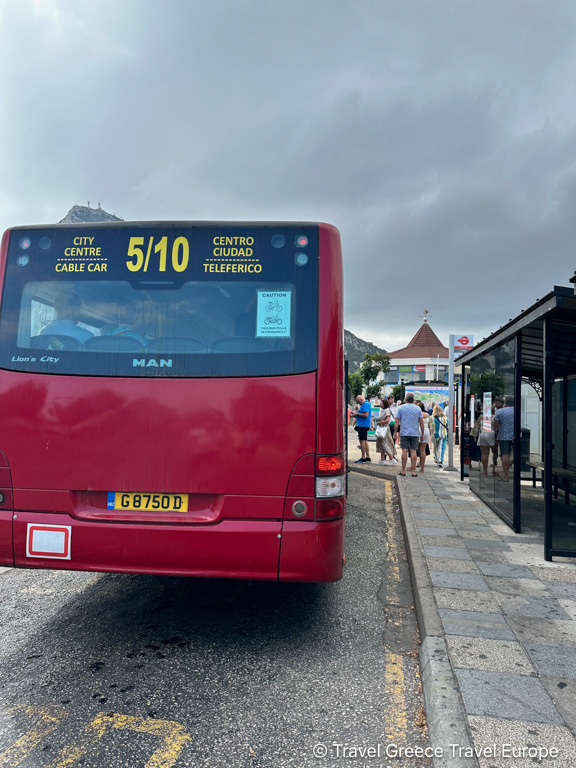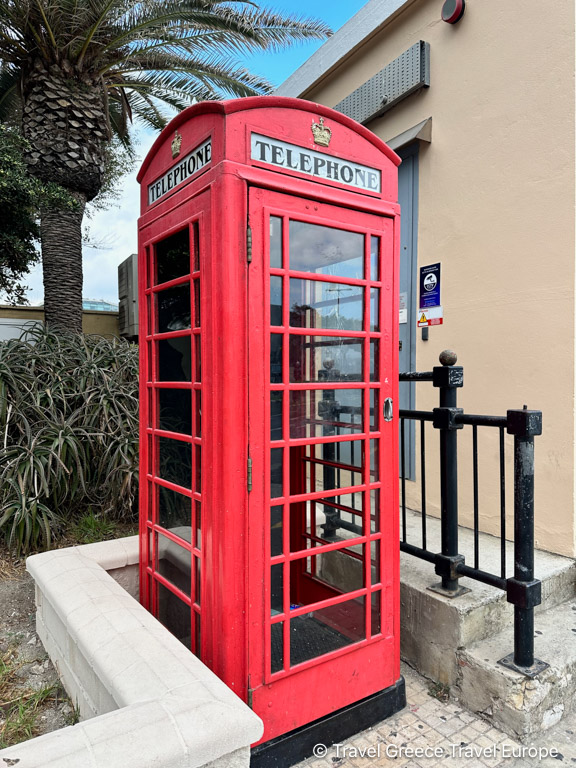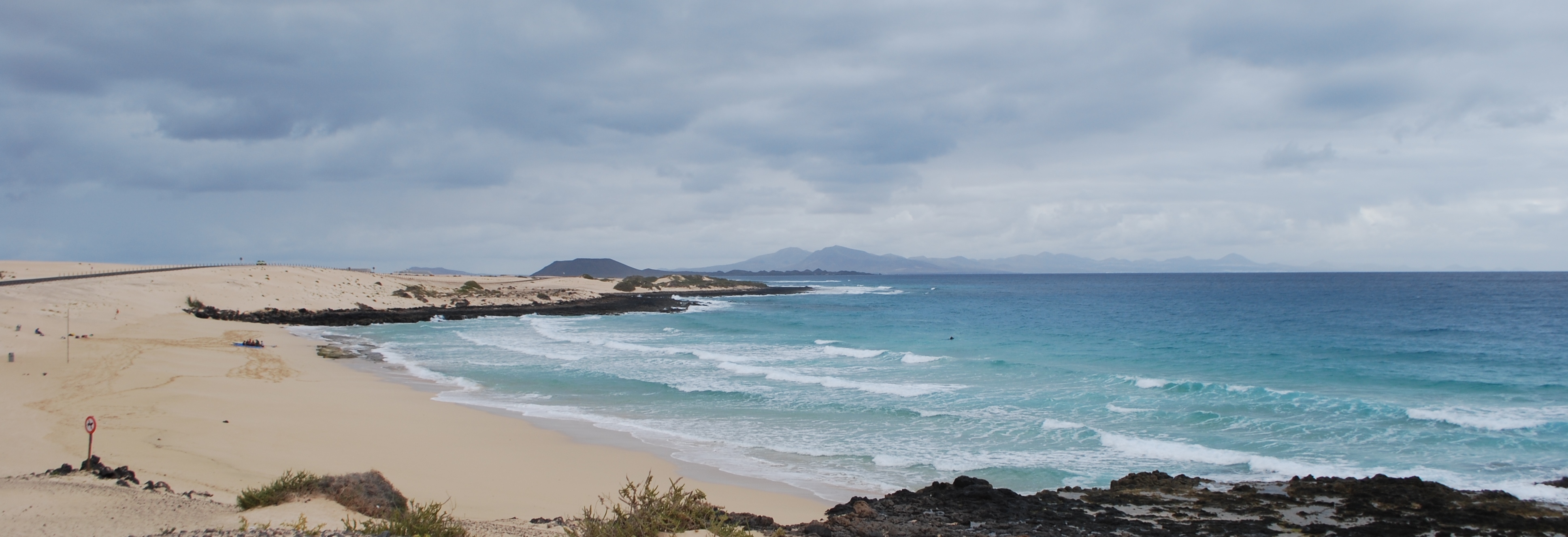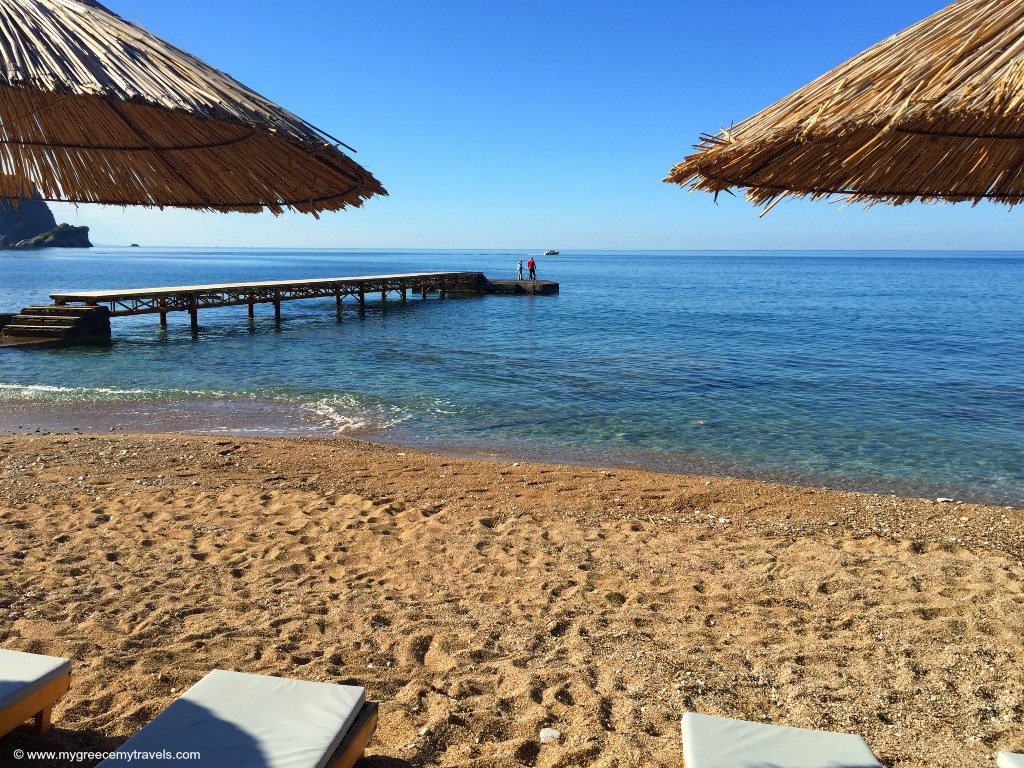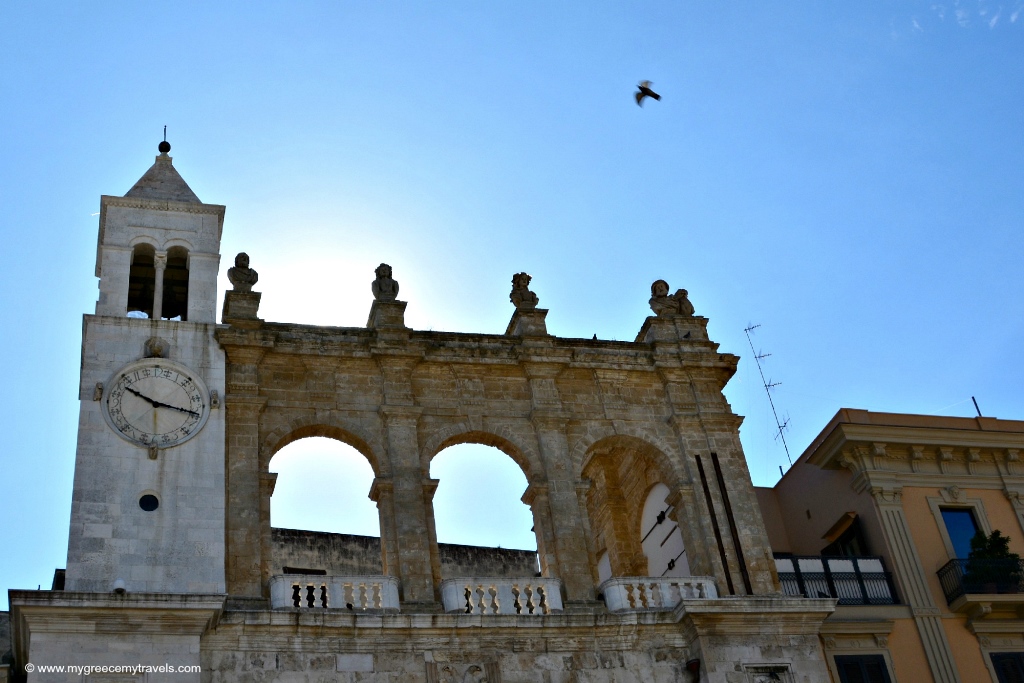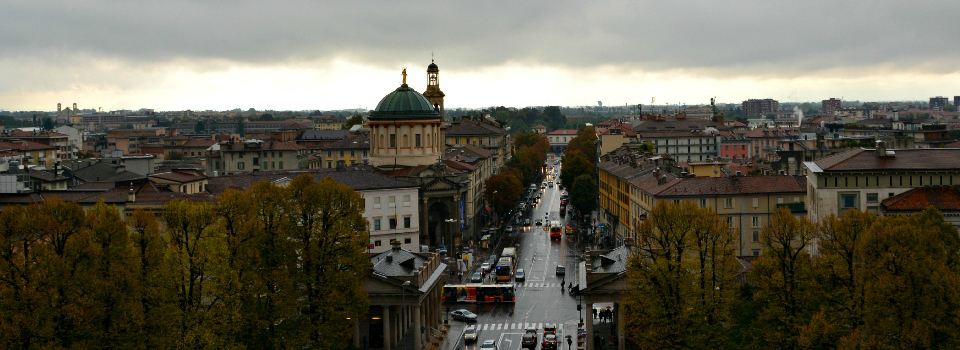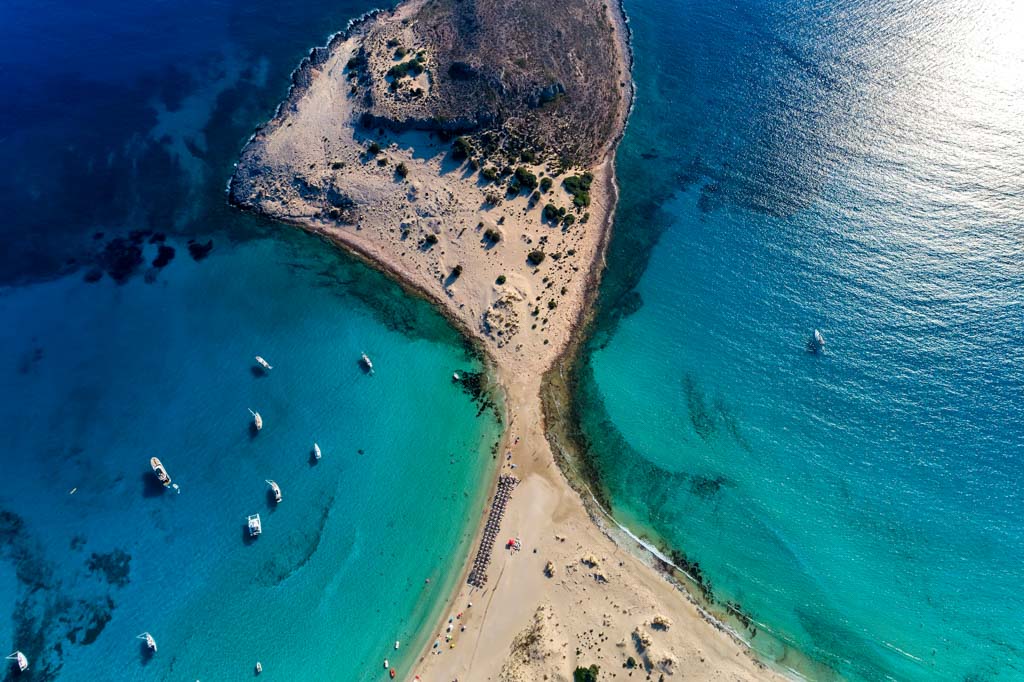What to Do in Gibraltar in One Day: A Complete Guide
Gibraltar, a British Overseas Territory located at the southern tip of the Iberian Peninsula, is a small but fascinating destination that offers a unique blend of British and Mediterranean cultures. Despite its modest size, Gibraltar is packed with historical sites, natural wonders, and opportunities for adventure, making it a perfect destination for a day trip from the nearby cities in Andalusia, Spain. In this blog post, we’ll explore everything you need to know to make the most of your one day in Gibraltar.
A Brief History of Gibraltar
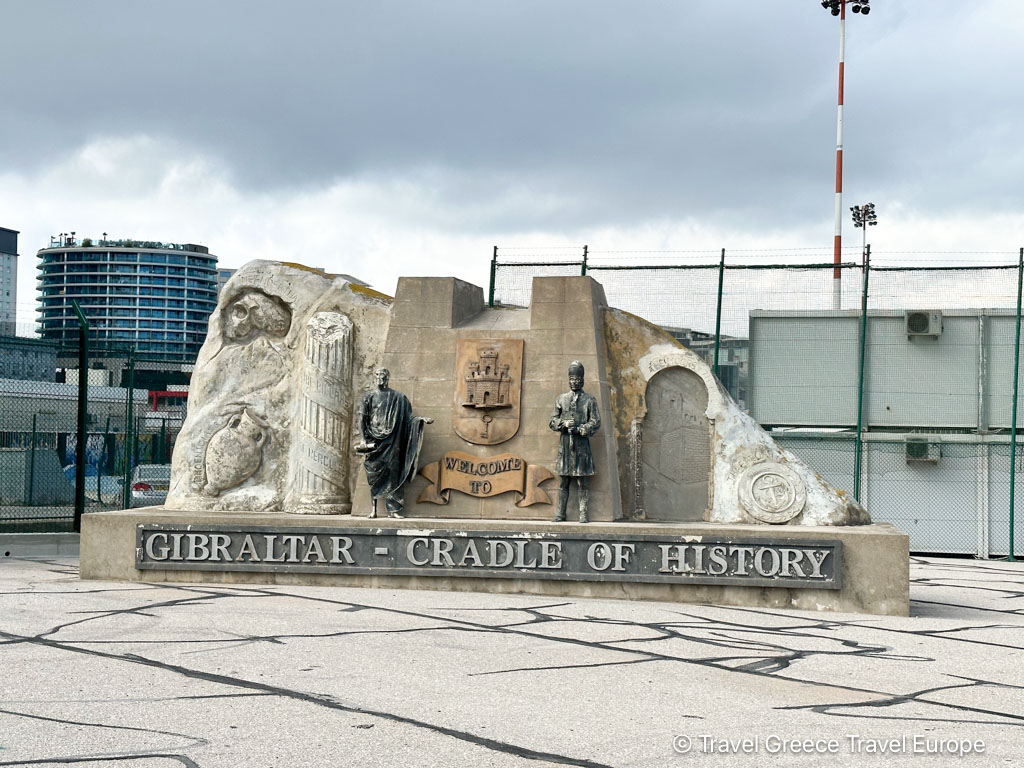
Gibraltar’s history is as rich and varied as the cultures that have influenced it. The Rock of Gibraltar, a towering limestone promontory, has been a strategic military and naval base for centuries due to its position at the entrance of the Mediterranean Sea. The region was first inhabited by the Moors in 711 AD, who named it “Jabal Tariq” (Mountain of Tariq), after the leader Tariq ibn Ziyad. This name eventually evolved into “Gibraltar.”
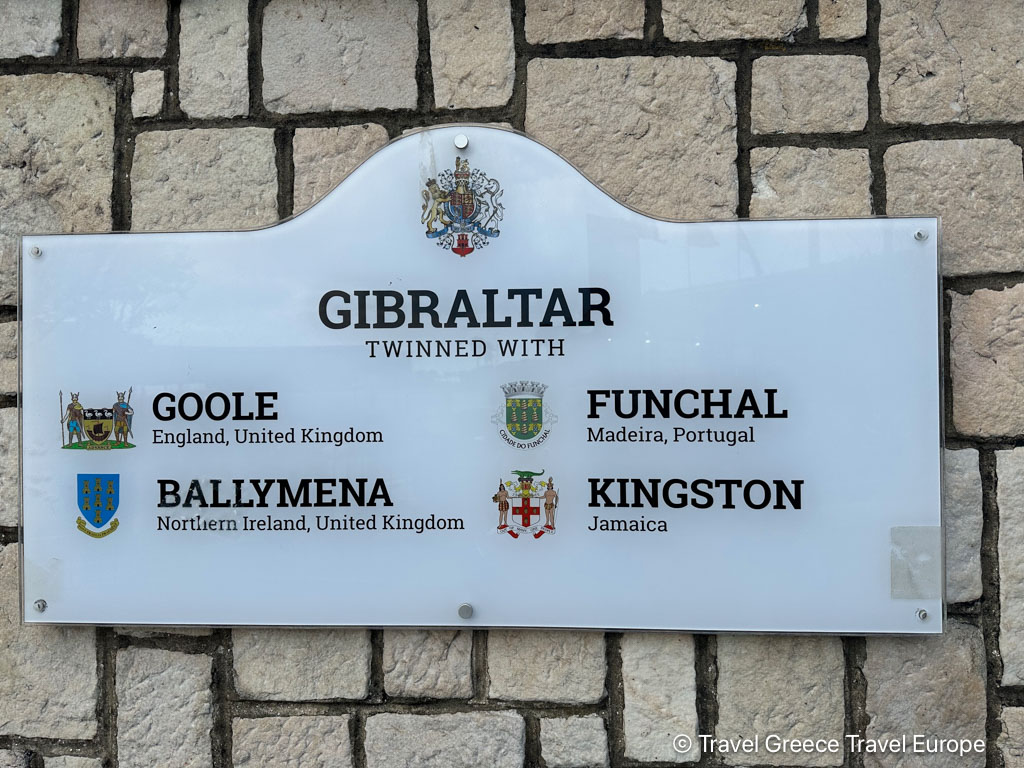
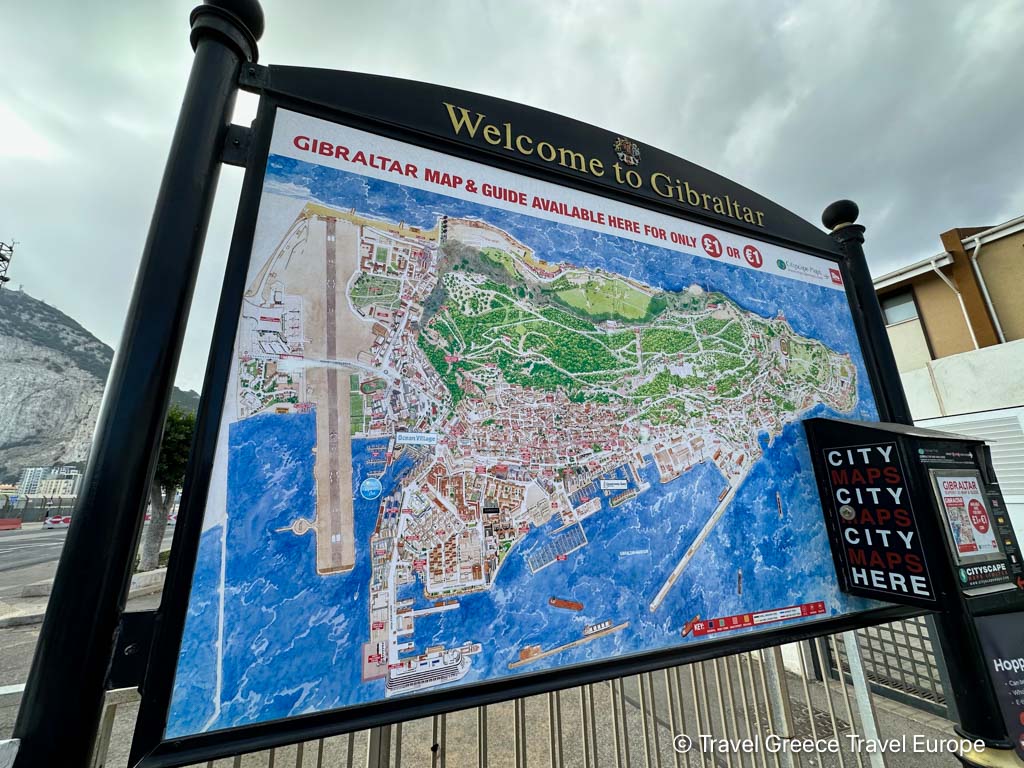
In 1704, during the War of the Spanish Succession, Gibraltar was captured by an Anglo-Dutch force and was subsequently ceded to Britain under the Treaty of Utrecht in 1713. Despite numerous sieges and attempts to reclaim the territory, Gibraltar has remained under British control ever since. Today, Gibraltar is known for its iconic Rock, its status as a British Overseas Territory, and its unique blend of British and Spanish influences.
Crossing the Border: What You Need to Know
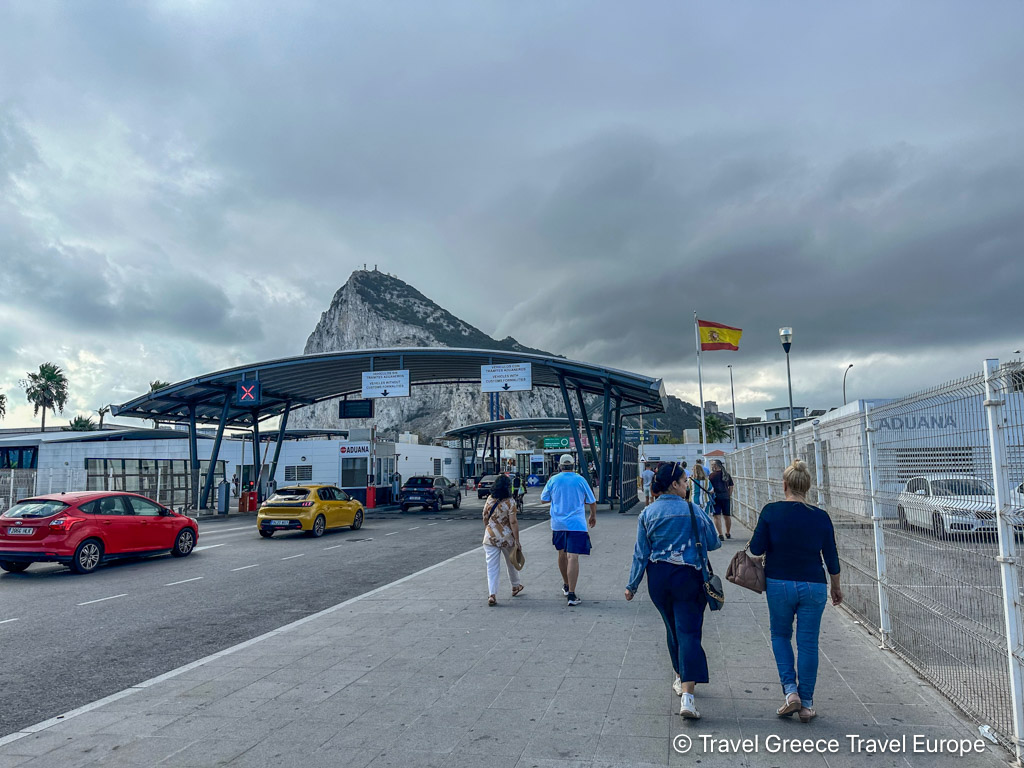
Gibraltar shares a land border with Spain, specifically with the city of La Línea de la Concepción in the Andalusia region. Crossing the border is generally straightforward, but there are a few things you should know:
Documents: If you are a European Union (EU) citizen, you only need an ID card or passport to enter Gibraltar. Non-EU citizens may require a visa, so it’s important to check the specific entry requirements before your trip.
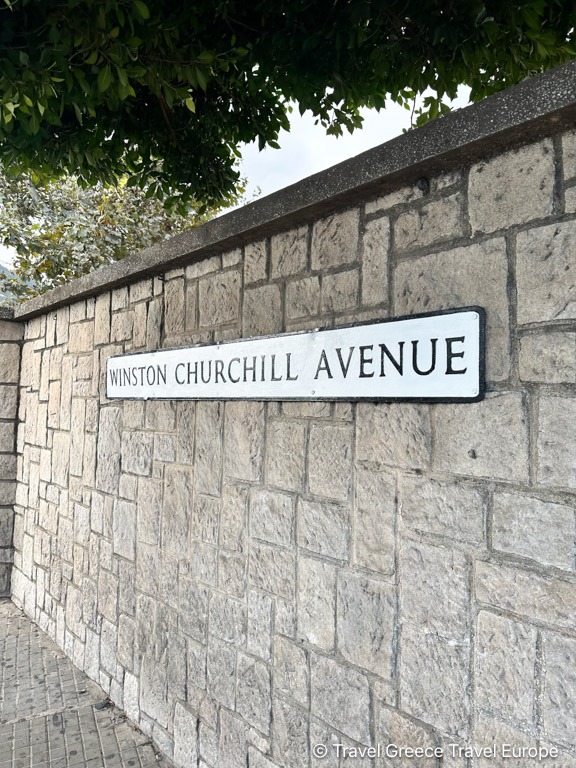
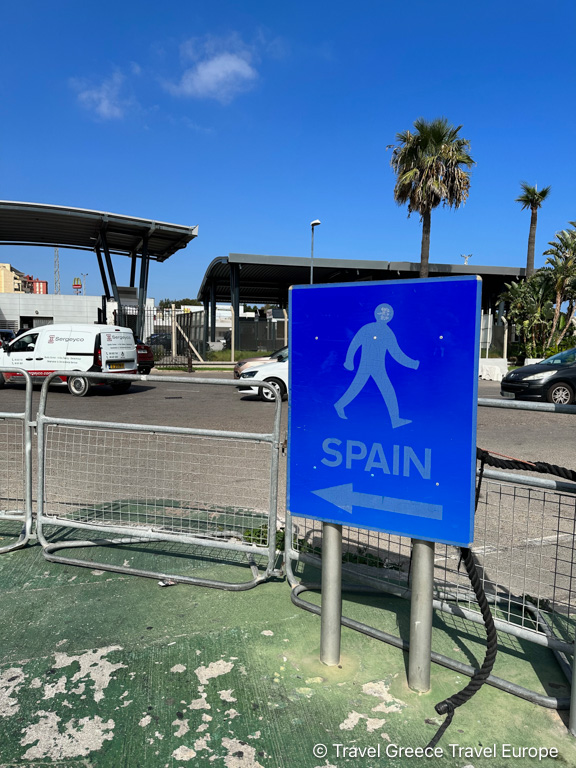
Customs and Border Control: While Gibraltar is part of the Schengen area, it has its own customs and border controls. Expect to go through a brief customs check when crossing the border, both when entering and leaving Gibraltar.
Transportation: You can walk, drive, or take a bus across the border. Walking is often the quickest option, especially during busy periods when there might be long queues for vehicles. You actually walk across the airport runway which is a super cool experience, therefore there maybe some waiting time if there is a plane landing or departing.
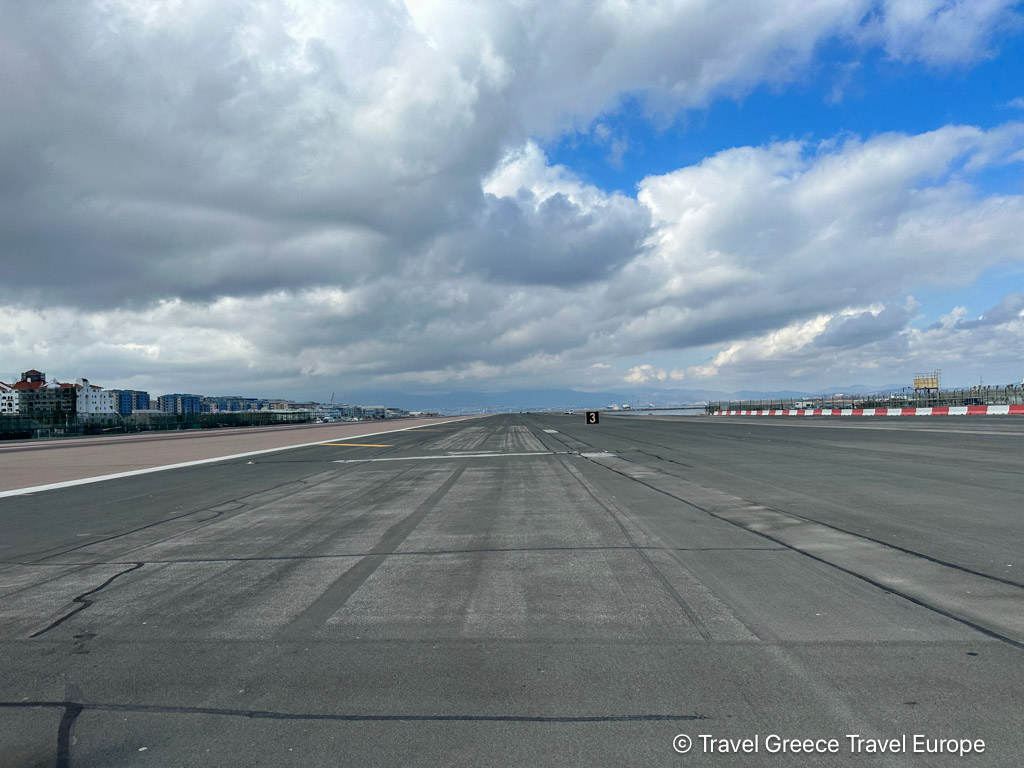
Currency: Gibraltar uses the Gibraltar pound (GIP), which is pegged at par with the British pound sterling (GBP). Both GIP and GBP are accepted in Gibraltar, but note that Gibraltar pounds may not be accepted in the UK or elsewhere. Many establishments in Gibraltar also accept Euros, although the exchange rate might not be favorable.
Cities in Andalusia for a Day Trip to Gibraltar
Gibraltar is easily accessible from several cities in the Andalusia region of Spain making it a great option for a day trip. We visited Gibraltar on a day trip from Seville. Here are some of the most convenient options depending on your itinerary and point of base:
La Línea de la Concepción (0 km to Gibraltar):
Travel Time: Walking distance across the border.
This border town is the gateway to Gibraltar and offers easy access on foot. It’s not a major tourist destination, but it serves as a convenient base for crossing into Gibraltar.
Algeciras (12 km to Gibraltar):
Travel Time: About 25 minutes by bus or car.
A bustling port city, Algeciras offers frequent bus services to La Línea, making it a convenient option for travelers who prefer a slightly larger city with more amenities.
Estepona (48 km to Gibraltar):
Travel Time: Approximately 40 minutes by car.
Estepona is a charming coastal town with beautiful beaches and a traditional Andalusian atmosphere. It’s a great place to combine a day in Gibraltar with some relaxation on the Costa del Sol.
Marbella (75 km to Gibraltar):
Travel Time: Around 1 hour by car.
Overview: Known for its luxury resorts, Marbella is another popular starting point for day trips to Gibraltar. The drive along the Costa del Sol offers stunning views of the Mediterranean.
Málaga (135 km to Gibraltar):
Travel Time: Around 1 hour and 45 minutes by car.
Málaga is the largest city in the region and is famous for its cultural attractions, including museums, historic sites, and excellent dining options. It’s a longer drive, but well worth it if you’re looking for a more comprehensive Andalusian experience. You might like to book an organized Gibraltar tour. If you prefer a private option, check our this tour.
Seville (200 km to Gibraltar):
Travel Time: Approximately 2 hours and 30 minutes by car.
Seville, the capital of Andalusia, is a vibrant city known for its rich history, flamenco music, and stunning architecture, including the famous Seville Cathedral and the Alcázar Palace. While it’s a longer drive, Seville is an excellent base for a day trip to Gibraltar if you’re looking to combine the visit with the exploration of a major Spanish city. Check out our post – Unforgettable 3 Days in Seville, Spain: Explore History and Culture
What to See and Do in Gibraltar in One Day
#1. The Rock of Gibraltar:
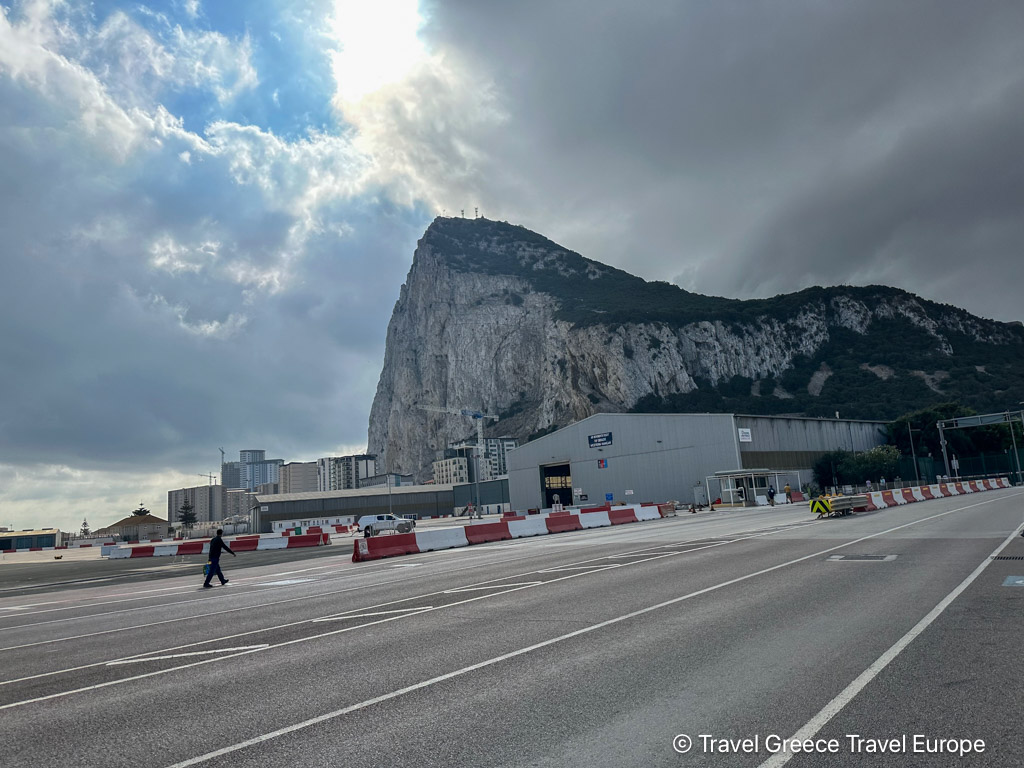
The Rock of Gibraltar, is a 426-meter-high limestone promontory, and is considered to be the territory’s most iconic feature. Seen as a symbol of strength and endurance, it has often been depicted as such in British culture. Historically, it has been a strategic military base, with its location at the entrance to the Mediterranean making it crucial for naval dominance. The Rock is home to numerous attractions, including:
Upper Rock Nature Reserve: A protected area that offers stunning views and houses several key historical sites. The reserve is rich in flora and fauna, including migratory birds.
St. Michael’s Cave: A natural wonder with impressive stalactites and stalagmites, the cave has been known since ancient times and was believed by the Greeks and Romans to be an entrance to the underworld.
Great Siege Tunnels: Carved out by the British during the Great Siege of Gibraltar (1779-1783), these tunnels played a crucial role in the defense against Spanish and French forces. They provide a fascinating insight into military engineering.
To get to the top of the Rock of Gibraltar you can either take a guided bus-tour or the Cable Car, which is one of the most popular experiences and one of the best things to do in Gibraltar in one day. You can also book a private tour that will show you the wonders of sites such as the Pillars of Hercules, Saint Michael’s Cave, and The Skywalk.
How to Get to the Rock of Gibraltar with a Cable Car:
The Gibraltar Cable Car has been a vital part of the tourism infrastructure since it opened in 1966. It was built to provide easy access to the summit of the Rock, which was previously only reachable by a challenging hike or military road.
The base station is located at Grand Parade, just a short walk from Main Street and the town center. To reach the Gibraltar Cable Car from the border, you can take the convenient Bus #10, which runs directly from the Gibraltar-Spain border to the cable car’s base station. This bus drops you off right at the cable car carpark, making it the easiest and most direct option.
If you are planning to visit Gibraltar on your own, you might like to purchase the Gibraltar City Pass that gives you access to over 20 top attractions.
The cable car ascends from the base station at the southern end of Main Street to the summit of the Rock of Gibraltar, stopping at two stations:
- Middle Station: Located within the Upper Rock Nature Reserve, this stop offers access to attractions like the Apes’ Den and various walking trails.
- Top Station: The summit of the Rock, which stands at 412 meters above sea level, offers panoramic views and access to St. Michael’s Cave, the Great Siege Tunnels, and more.
The top station offers one of the most stunning viewpoints in Gibraltar. From here, you can see across the Strait of Gibraltar to Morocco, the Bay of Gibraltar, and the Spanish coastline. It’s an ideal spot for photography, especially at sunrise or sunset.
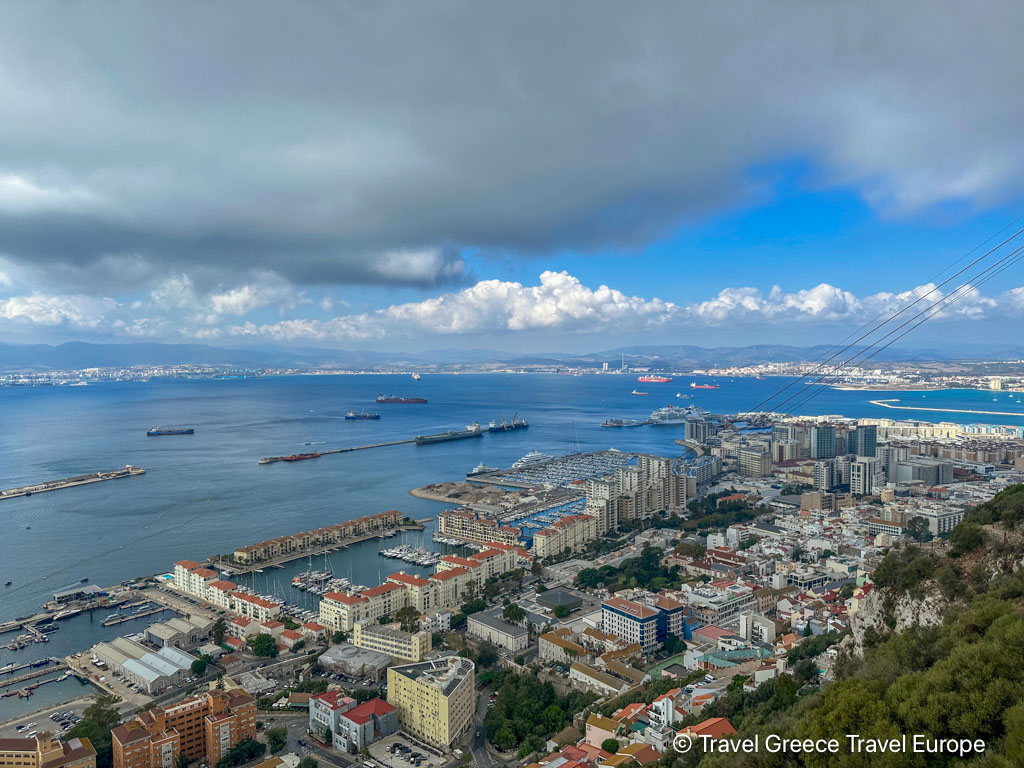
Terrace Café: There’s a café at the top station where you can relax and enjoy refreshments while taking in the views.
Wildlife: The top station is also a great place to observe Gibraltar’s famous Barbary macaques. These monkeys are often seen around the area, and while they can be entertaining, it’s important to remember not to feed them. You might like to choose this experience option – Gibraltar: Dolphin Watch Cruise & Cable Car Fast Track Combo
#2. The Apes’ Den:
The Barbary macaques of Gibraltar are the only wild monkey population in Europe and have become iconic symbols of the Rock. These monkeys, native to North Africa, are believed to have been brought to Gibraltar by the Moors in the 8th century, though some legends suggest they arrived even earlier.
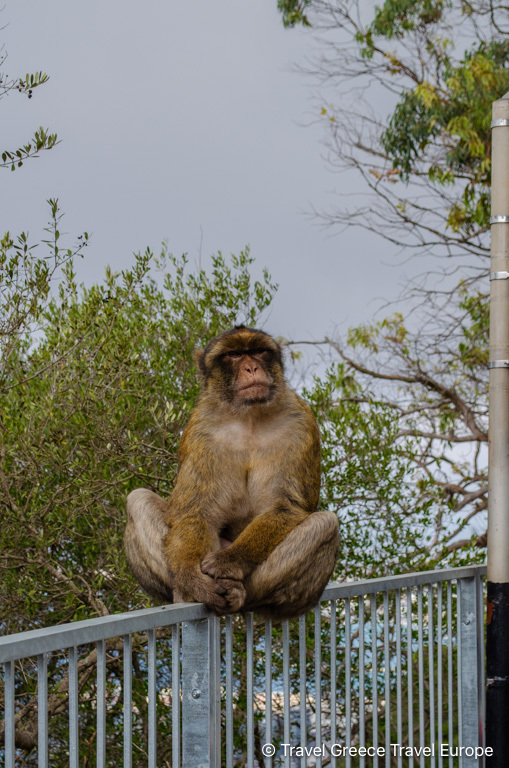
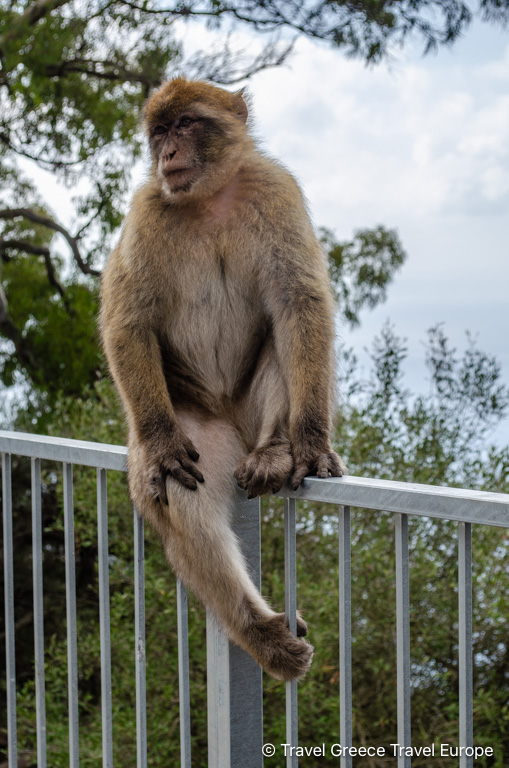
A popular belief holds that as long as the Barbary macaques remain on Gibraltar, it will stay under British control. During World War II, when the macaque population dwindled, Winston Churchill ordered more to be brought from North Africa to ensure their continued presence.
Some myths suggest the monkeys arrived via a secret tunnel under the Strait of Gibraltar, connecting the Rock to Africa. While this is more legend than fact, it adds to their mystique.
Local folklore on the other hand often portrays the macaques as spiritual guides or protectors of the Rock, with tales told that they help lost travelers in foggy conditions.
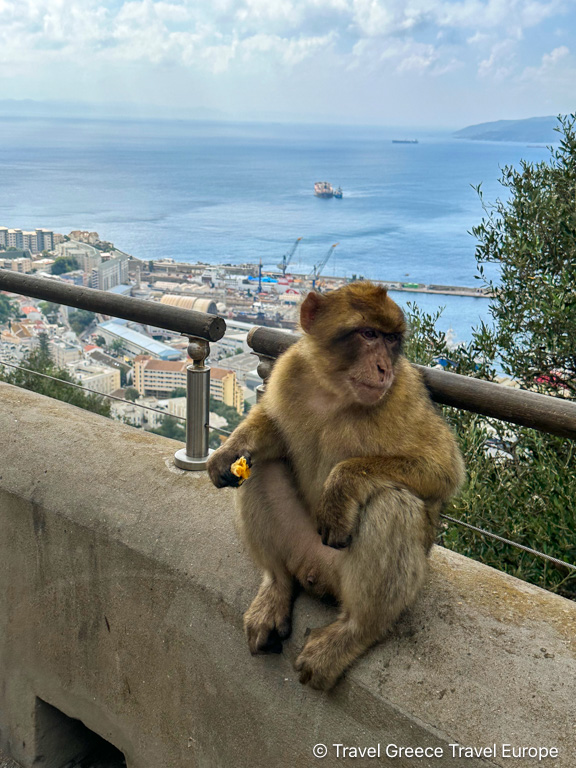


Today, about 200 Barbary macaques live in Gibraltar, primarily within the Upper Rock Nature Reserve. They are protected by law and are a major attraction, symbolizing Gibraltar’s rich history and unique identity.
Visitors are often amused by their antics but you must approach them cautiously, as the macaques are known to snatch food and belongings.
#3. The Great Siege Tunnels:
The Great Siege Tunnels are a testament to British ingenuity and determination during one of Gibraltar’s most challenging periods. Dug by hand using only basic tools, these tunnels were critical in defending the territory during the Great Siege of 1779-1783, when Spain and France attempted to retake Gibraltar. The tunnels housed cannons and troops, providing a strategic advantage. Today, you can walk through the tunnels and see displays of historical weapons, mannequins dressed in period military uniforms, and detailed information about the siege.
#4. St. Michael’s Cave:
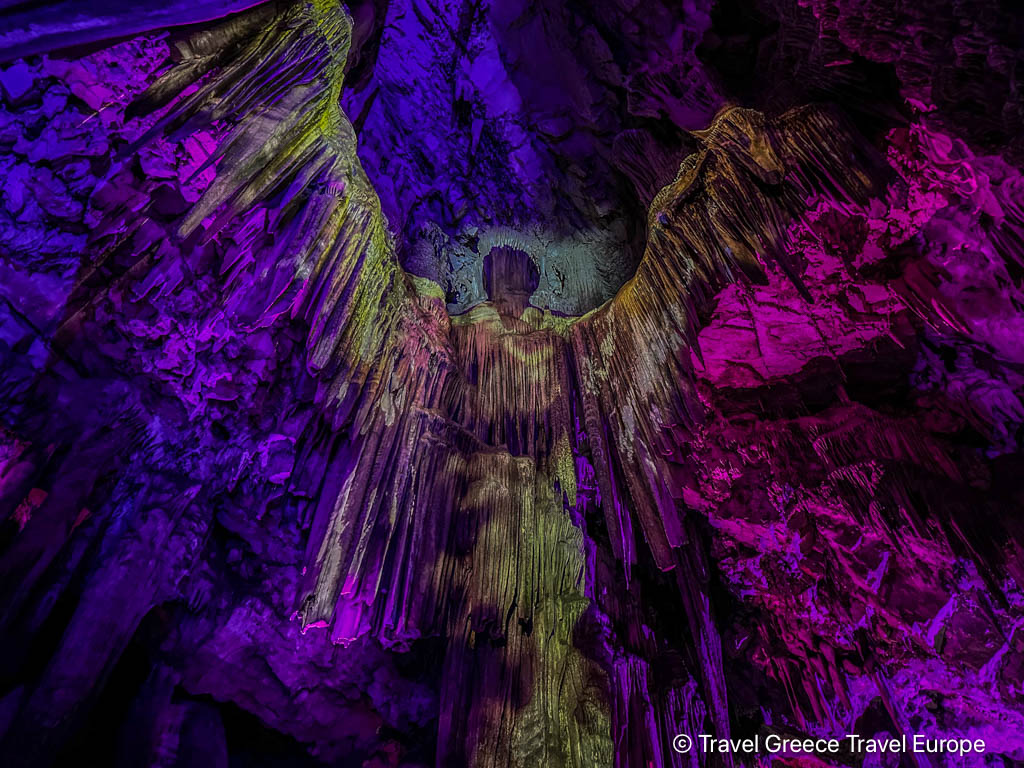
St. Michael’s Cave is a network of limestone caves located within the Upper Rock Nature Reserve. It has been known since antiquity, with references to the cave appearing in the writings of ancient geographers. The cave has served various purposes throughout history, from a shelter during wartime to a venue for concerts due to its natural acoustics.
The stunning formations of stalactites and stalagmites, illuminated by colored lights, make it a breathtaking natural attraction. The main chamber, known as Cathedral Cave, is particularly impressive and can hold over 400 people.
#5. Europa Point:

Europa Point is the southernmost tip of Gibraltar, offering panoramic views across the Strait of Gibraltar to North Africa. Historically, it has been a crucial point for navigation, with the iconic Trinity Lighthouse guiding ships safely through the strait since 1841. Europa Point is also home to several significant landmarks:
- Ibrahim-al-Ibrahim Mosque: One of the largest mosques in a non-Muslim country, it was a gift from the late King Fahd of Saudi Arabia to the Muslim population of Gibraltar. The mosque’s striking white minarets stand in stark contrast to the rocky landscape.
- Harding’s Battery: A restored artillery battery named after Sir George Harding, who was the Chief Engineer of Gibraltar in the early 19th century. The battery played a key role in the defense of the territory.
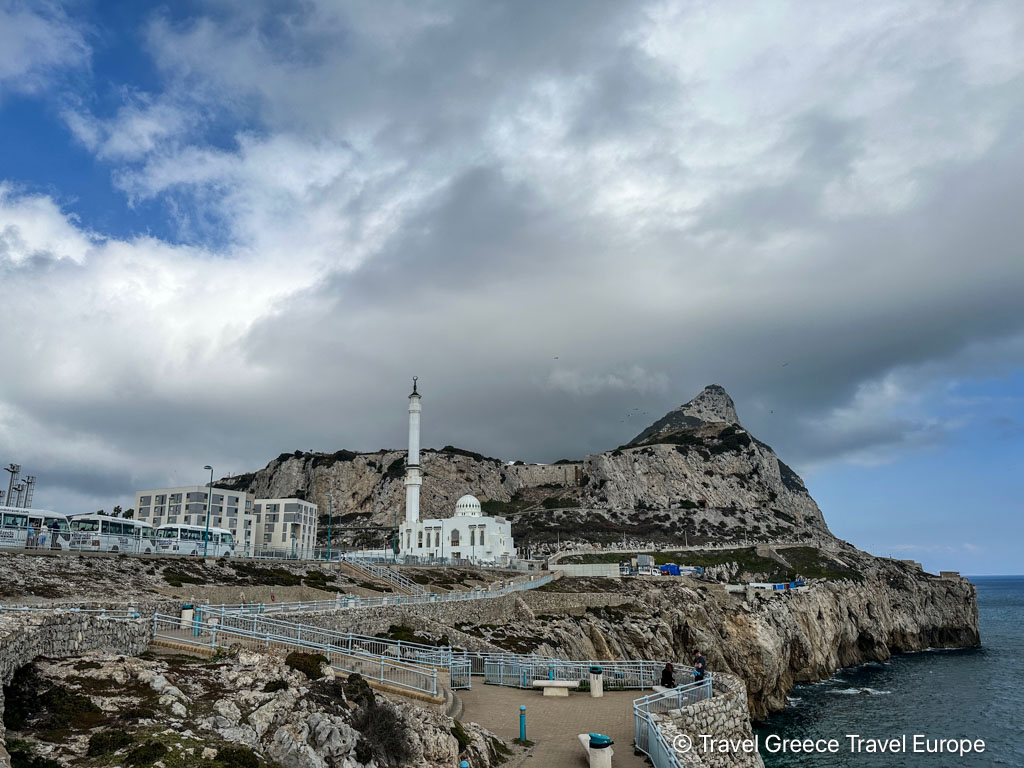
#6. Europa Waterfall
The Europa Waterfall in Gibraltar is a small but notable waterfall located near Europa Point, the southernmost point of Gibraltar. This waterfall is not a natural phenomenon but rather a result of human activity. Specifically, it is associated with the outflow from Gibraltar’s desalination plant, where excess water from the desalination process cascades down the rock face, creating the waterfall effect.
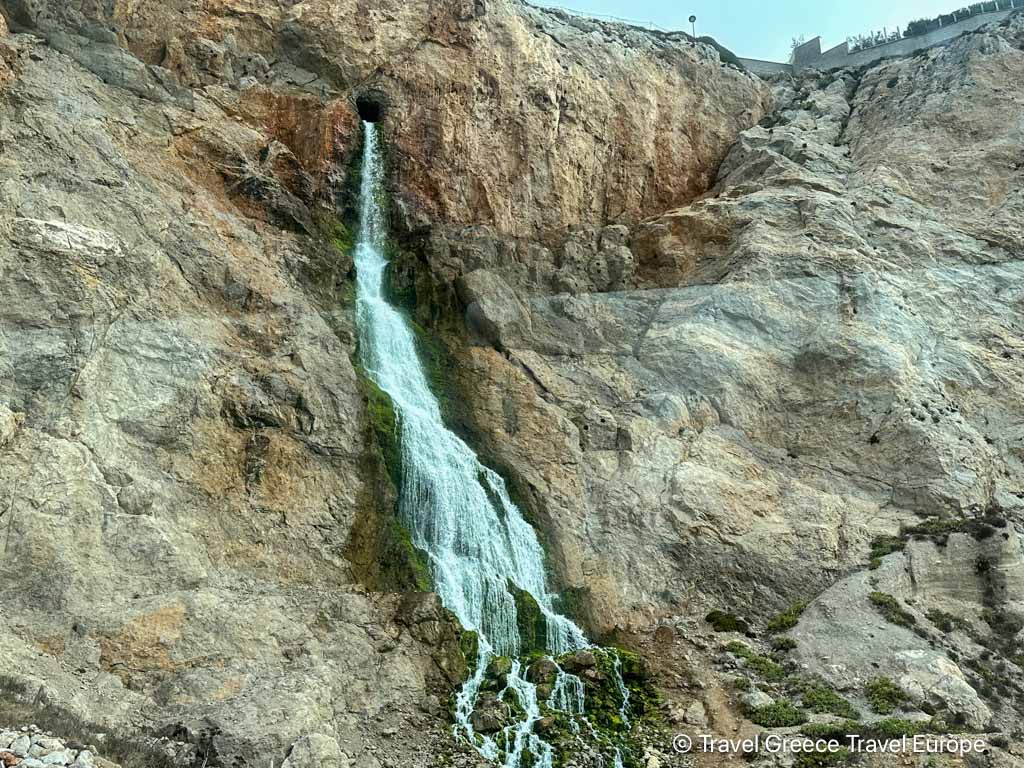
While it may not be a large or naturally occurring waterfall, it is still an interesting feature to observe, particularly given its proximity to Europa Point, which is known for its stunning views of the Strait of Gibraltar and the coast of Africa.
#7. The Gibraltar Museum:
The Gibraltar Museum is located in the old town, housed in a building that dates back to 1726. The museum offers a comprehensive look at Gibraltar’s history, from prehistoric times to the present day. Highlights include:
- The Moorish Bathhouse: One of the best-preserved examples of Moorish architecture on the Rock, dating back to the 14th century.
- The Rock’s Natural History: Exhibits on the unique flora and fauna of Gibraltar, including the famous Barbary macaques.
- The Great Siege Exhibition: A detailed look at the Great Siege of 1779-1783, with artifacts, maps, and models that bring this period to life.
#8. Main Street:
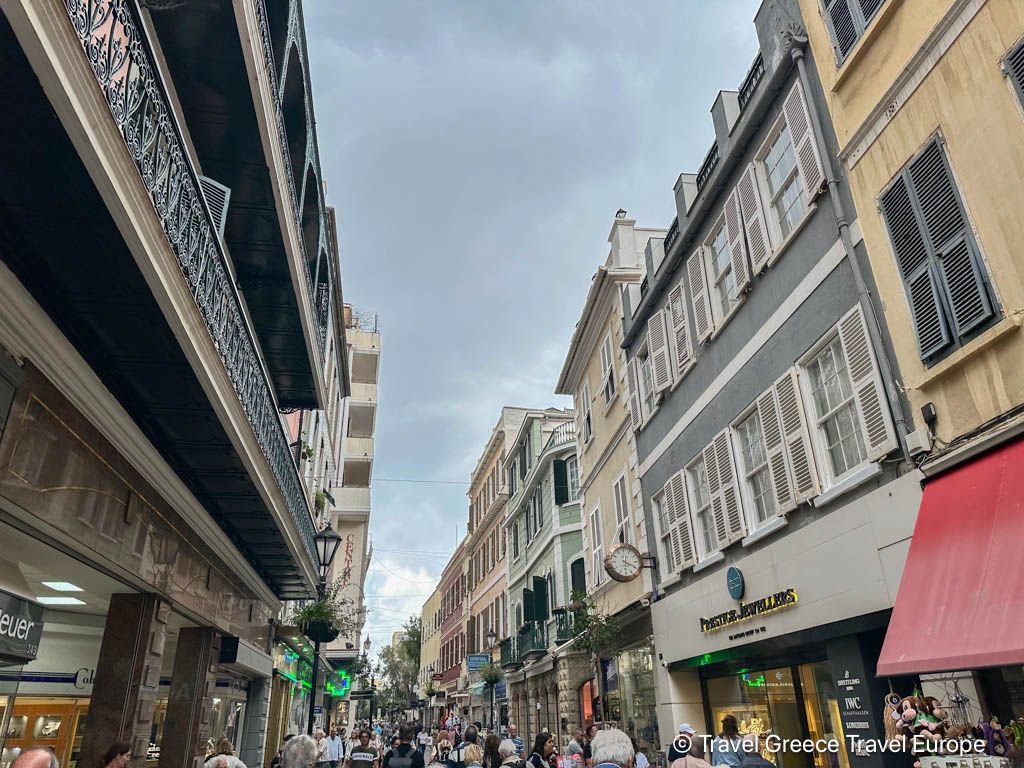
Main Street is the commercial heart of Gibraltar, offering a blend of British and Mediterranean shopping experiences. Lined with shops, cafes, and restaurants, it’s the perfect place to pick up duty-free goods, such as electronics, perfumes, and spirits. The street’s architecture reflects Gibraltar’s diverse history, with buildings dating back to the 18th and 19th centuries. As you stroll down Main Street, you’ll notice the strong British influence, with familiar brands and red telephone boxes.
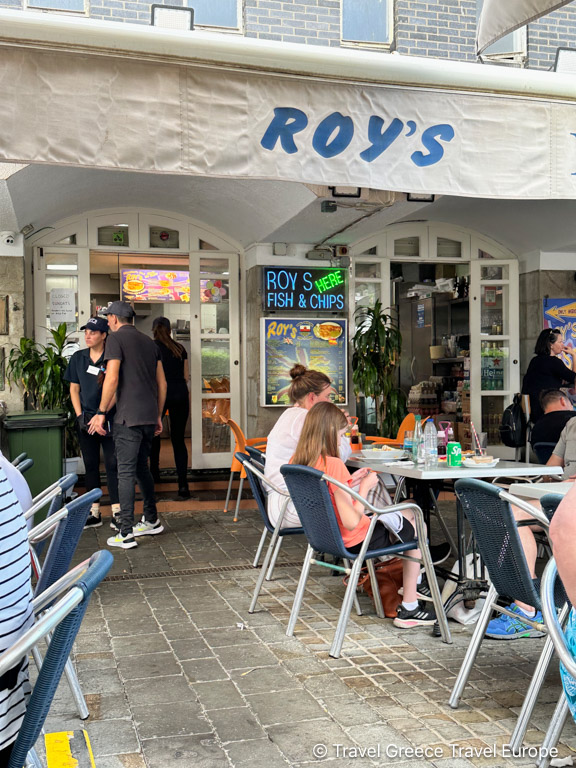
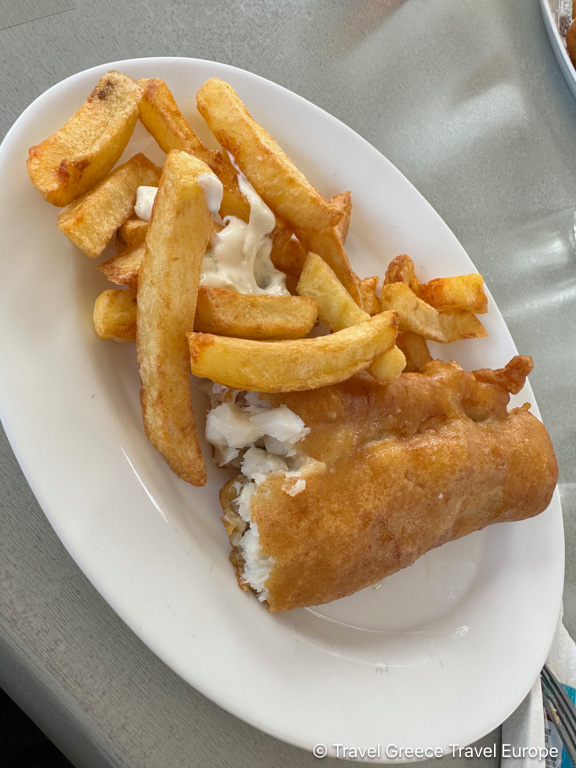
Don’t miss the chance to enjoy traditional British fish and chips at one of the local eateries, which is a must-try in this unique setting.
#9. Casemates Square
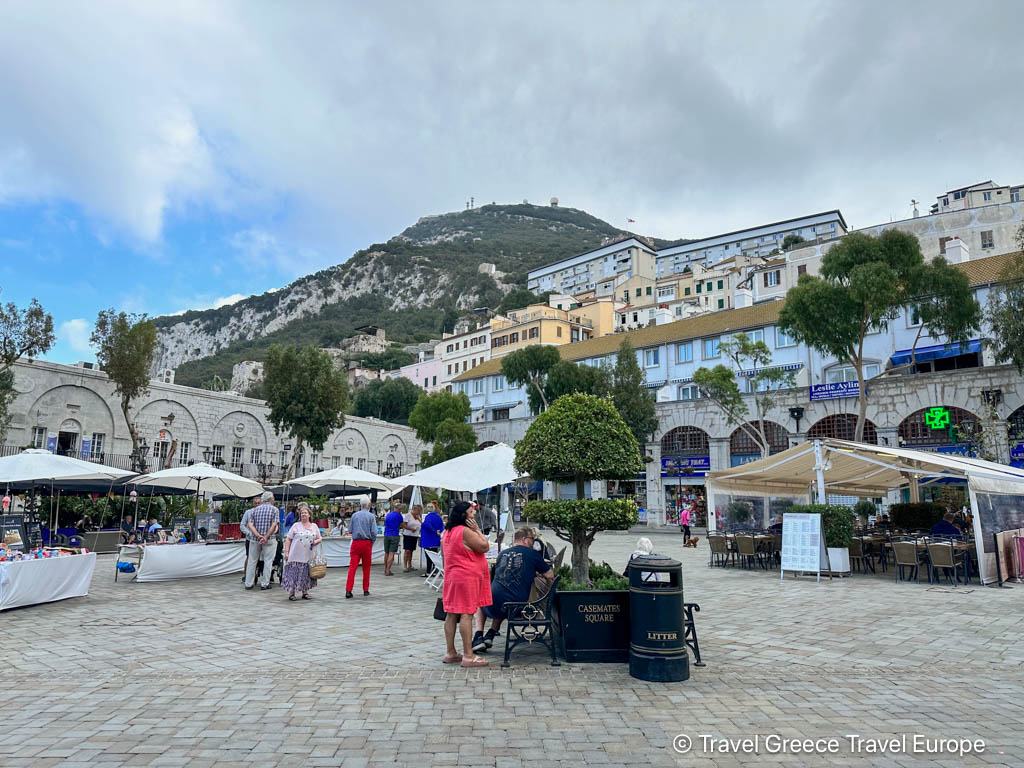
Casemates Square is the largest public square in Gibraltar and a central hub of activity. Located at the northern end of Main Street, it is steeped in history, once serving as a military barracks and a site for public executions. Today, Casemates Square is a lively gathering place surrounded by restaurants, cafes, and shops, making it a popular spot for both locals and tourists. The square hosts various cultural events, markets, and celebrations throughout the year, reflecting its vibrant role in the social life of Gibraltar.
#10. Sundial Roundabout
The Sundial Roundabout in Gibraltar is a notable landmark featuring a large sundial structure at its center. This sundial is designed with a circular base and a gnomon (the part that casts the shadow) that points towards the sky. Around the base of the sundial, you’ll find markings that indicate the time, along with zodiac signs that add an astrological touch to the structure.
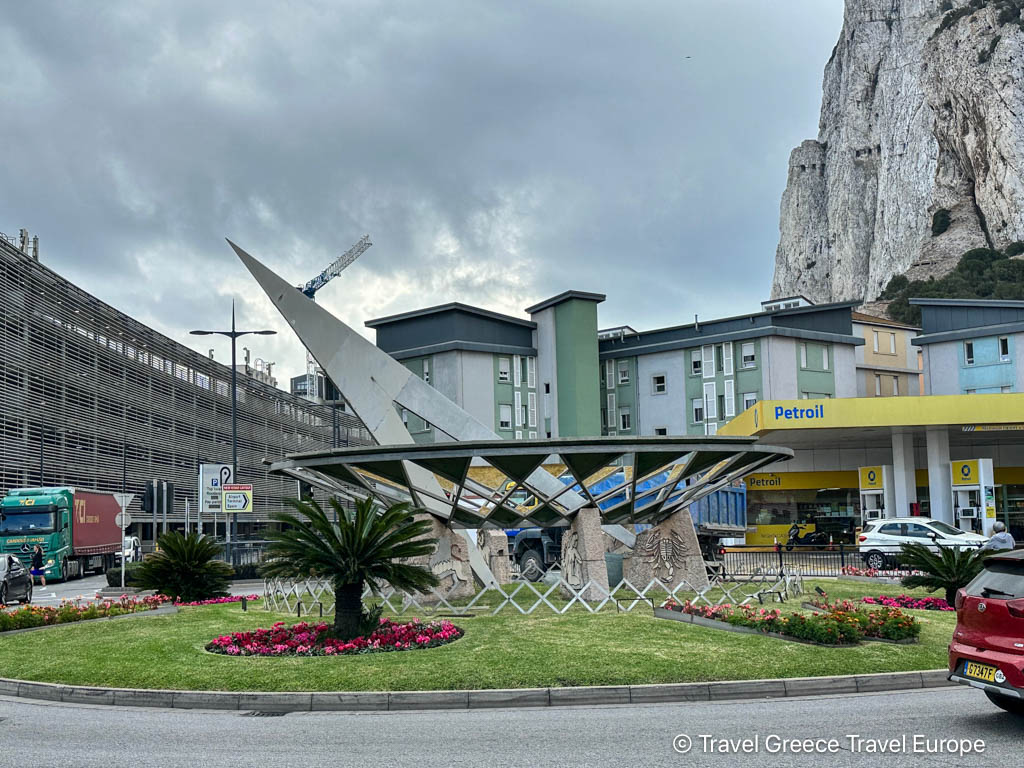
The roundabout itself is a popular spot due to its distinctive and functional design, which not only serves as a time-telling device but also as a piece of public art.
#11. Red Telephone Boxes:
As you explore Gibraltar, you’ll notice the iconic red telephone boxes scattered throughout the territory. These boxes are a symbol of Gibraltar’s British identity, having been introduced during the 20th century when the British telephone system was extended to the Rock.
While these boxes are no longer essential in the age of mobile phones, they remain a nostalgic and picturesque reminder of Gibraltar’s status as a British Overseas Territory. They are popular spots for tourists to snap photos, capturing a slice of Britain in the Mediterranean.
#12. The Pillars of Hercules
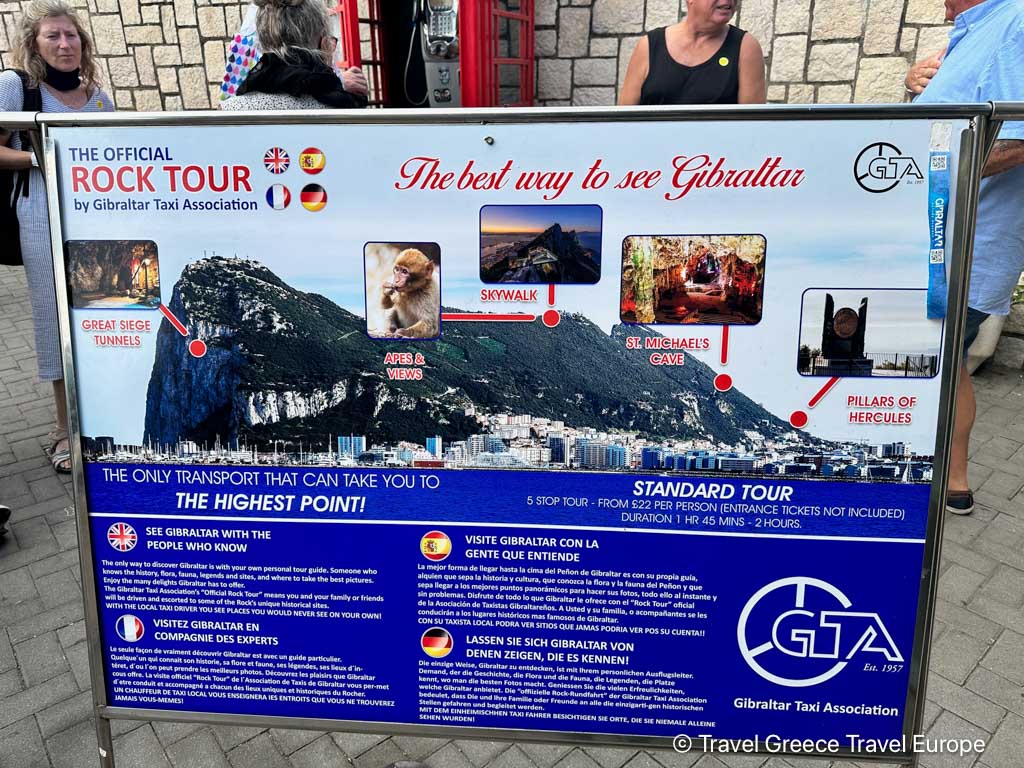
The Pillars of Hercules refer to the two promontories that flank the entrance to the Strait of Gibraltar: the Rock of Gibraltar on the European side and Jebel Musa on the African side. In ancient mythology, these landmarks were said to be created by the hero Hercules during his Twelve Labors, where he pushed apart the mountains to create a passage between the Atlantic Ocean and the Mediterranean Sea. The Pillars of Hercules have been a symbol of exploration and the boundary of the known world in classical antiquity. Today, they represent a significant geographical and cultural landmark, marking the divide between Europe and Africa.
#13. Gibraltar Skywalk
The Gibraltar Skywalk is a modern observation platform located near the top of the Rock of Gibraltar. Opened in 2018, the Skywalk offers breathtaking panoramic views of the surrounding area, including the Mediterranean Sea, the Atlantic Ocean, and, on clear days, the coastlines of Spain and Morocco. The platform is constructed with glass floors, allowing visitors to look straight down and experience the sensation of walking in the sky. Positioned over 340 meters above sea level, the Skywalk is a popular attraction for those seeking both stunning scenery and a bit of an adrenaline rush.
When is the Best Time to Visit Gibraltar?
The best time to visit Gibraltar is during the spring (April to June) and autumn (September to October) when the weather is pleasantly warm, and the tourist crowds are smaller. During these months, temperatures are typically mild, ranging from 18°C to 25°C (64°F to 77°F), making it ideal for outdoor activities such as exploring the Upper Rock Nature Reserve, visiting the beaches, or taking a stroll through the historic streets. Spring also brings blooming flora, adding vibrant colors to the landscape, while autumn offers clear skies and spectacular views across the Strait of Gibraltar. These shoulder seasons provide a perfect balance of comfortable weather and a more relaxed atmosphere compared to the peak summer months.
Conclusion
Gibraltar may be small, but it is a destination brimming with history, natural beauty, and cultural significance. Whether you’re interested in exploring military history, enjoying panoramic views, or simply soaking up the unique atmosphere, Gibraltar offers something for everyone. With convenient access from various cities in Andalusia, including Seville, it’s an ideal day trip for travelers exploring southern Spain. So pack your passport, enjoy the scenic drive, and get ready to experience all that Gibraltar has to offer in just one day!

